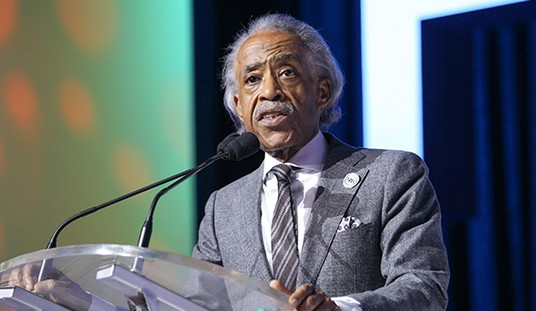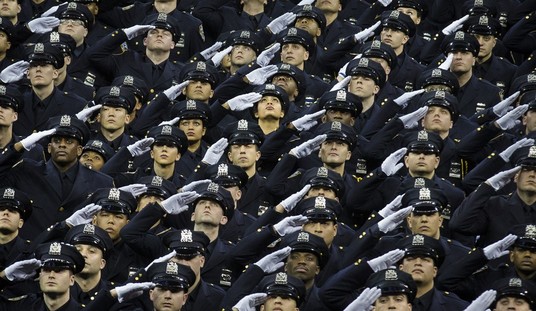The fate of Gaza and the Palestinians who live there has yet to be formally decided. Following the Donald Trump-brokered ceasefire last month, Israel withdrew to a line that split the Gaza Strip roughly in two, with Israel occupying about half the enclave.
Hamas controls the other half, although all of Gaza is supposed to be taken out of its hands and placed in an unelected "transition government" of technocrats once the UN votes on Trump's plan.
The timetable for that hasn't even been decided yet. With the UN moving at a snail's pace, Gaza and Hamas wait for some kind of resolution.
Gaza City activist and commentator Mustafa Ibrahim says that Hamas is taking advantage of the diplomatic delays to "bolster its rule" and reassert control over its side of the "yellow line," with Israel watching warily across the divide.
Hamas has already reestablished its terrorist hold over the people of Gaza. It executed Israeli "collaborators" and fought several pitched battles with local Palestinian militias. Administratively, it is levying taxes and fees on "some privately imported goods, including fuel as well as cigarettes, and fining merchants seen to be overcharging for goods," reports Reuters.
Not true, claims Hamas. The terrorists were only carrying out "urgent humanitarian and administrative tasks whilst making 'strenuous efforts' to control prices," reports the wire service.
U.S. President Donald Trump's Gaza plan secured a ceasefire on October 10 and the release of the last living hostages seized during the Hamas-led October 7, 2023 attacks on Israel.
The plan calls for the establishment of a transitional authority, the deployment of a multinational security force, Hamas' disarmament, and the start of reconstruction.
But Reuters, citing multiple sources, reported this week that Gaza's de facto partition appeared increasingly likely, with Israeli forces still deployed in more than half the territory and efforts to advance the plan faltering.
Nearly all of Gaza's 2 million people live in areas controlled by Hamas, which seized control of the territory from President Mahmoud Abbas' Palestinian Authority (PA) and his Fatah Movement in 2007.
In reality, Hamas has little incentive to adhere to the Trump deal. The terrorists are not going to disarm unless someone physically takes the guns away, or pries them away from their cold, dead hands.
Meanwhile, Hamas is using the diplomatic delay to burrow deeper into Gaza.
"The longer that the international community waits, the more entrenched Hamas becomes," said Ghaith al-Omari, a senior fellow at the Washington Institute.
Meanwhile, a security nightmare has cropped up, with no easy solution. Around 200 Hamas fighters remain underneath the rubble of the city of Rafah in Hamas tunnels, with no easy way to get them out. The tunnels are behind Israeli lines, making them a ready-made fifth column unless they can be convinced to surrender.
The issue of how to deal with up to 200 Hamas militants in Israeli-occupied territory in Gaza, is more than just a tactical problem for Israel’s military. It is a sensitive diplomatic matter with no clear way out.
These cells – and it’s unclear exactly how many there are or their precise locations – have fortified themselves in these tunnels since the ceasefire divided Gaza along the so-called yellow line one month ago: Israel occupies territory east of the line while Hamas reasserts power west of it.
Prime Minister Benjamin Netanyahu has made clear he has no intention of simply letting the Hamas cells walk out of the tunnels and return to the Hamas-controlled part of Gaza. Hamas has said its militants will never turn themselves in and hand over their weapons.
The Trump administration is pushing Israel to make progress towards some sort of viable solution, according to two Israeli sources, and Trump’s son-in-law - US envoy Jared Kushner - brought up the issue with Netanyahu in meetings earlier this week.
A source told CNN, “The Americans want to move ahead to the next phase and close the Rafah prisoners file."
That statement would suggest that Israel should let the Hamas fighters walk out of the tunnels and rejoin their comrades. Israeli Prime Minister Benjamin Netanyahu would probably blow up the tunnels and permanently seal them rather than follow that plan.
Those 200 fighters could easily blow up the ceasefire and scuttle the whole peace process if they were allowed to leave the tunnels. Unfortunately, it's not a problem that will solve itself.
It's going to take more hard negotiations to resolve this situation and the rest of the peace plan. Trump may have to put his prestige on the line to move the needle and bring a resolution to the war.










